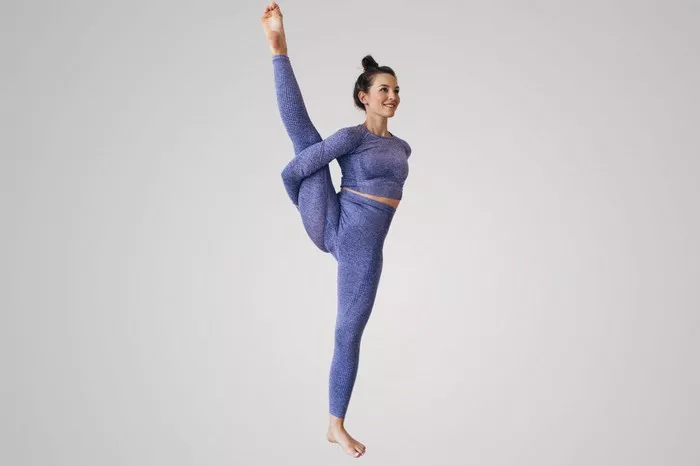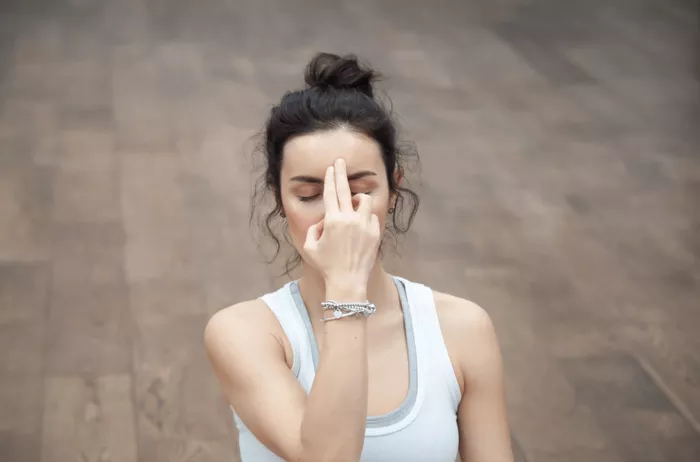Yoga has long been revered as a holistic practice that nurtures the mind, body, and spirit. Its countless benefits include increased flexibility, improved strength, stress reduction, and overall better health. One of the most common reasons people begin their yoga journey is to enhance flexibility, especially for beginners who might feel stiff or restricted in movement. Flexibility is an important aspect of yoga, but it can be a challenging goal to achieve for those new to the practice. Fortunately, yoga offers various styles and techniques that can help beginners gradually increase their flexibility, often with gentle, restorative movements that build strength and mobility over time.
In this article, we will explore the best types of yoga for beginners who wish to improve their flexibility. We’ll examine different styles of yoga, their key benefits, and how they can help you achieve greater flexibility. Whether you are just starting out on your yoga journey or looking to deepen your practice, you will find actionable insights to help you enhance your flexibility.
Understanding Flexibility in Yoga
Before we dive into the various yoga styles, it’s important to understand what flexibility means in the context of yoga. Flexibility is the ability of your muscles and joints to move through their full range of motion without discomfort or pain. Flexibility improves when muscles and tendons become more supple, allowing for easier and deeper stretches. In yoga, the goal is not only to increase flexibility but also to promote balance and alignment in the body.
For beginners, flexibility doesn’t necessarily mean touching your toes or performing advanced poses. It’s about making gradual progress, listening to your body, and allowing time for growth. Yoga practices focused on flexibility often incorporate long-held stretches, deep breathing, and mindful movements, all of which play a role in lengthening muscles and increasing joint mobility.
Benefits of Yoga for Flexibility
Practicing yoga for flexibility offers numerous physical and mental benefits, including:
Increased Range of Motion: Regular practice of yoga stretches the muscles and soft tissues, helping to open up tight areas in the body. Over time, the body becomes more limber, and the range of motion improves in the joints and muscles.
Reduced Muscle Tension: Yoga helps to release built-up tension and tightness in the muscles, which can be caused by stress, poor posture, or sedentary lifestyles.
Improved Posture: Increased flexibility can lead to better alignment and posture. Yoga emphasizes alignment and body awareness, which helps prevent slouching and misalignment caused by stiffness.
Prevention of Injury: Flexibility training improves the elasticity of the muscles, making them less prone to injury. When your muscles and joints are more flexible, they can withstand strain and stress better, especially during physical activities.
Enhanced Circulation: Many yoga poses stimulate blood flow, which promotes healing and helps flush out toxins from the body. This can contribute to overall muscle health and quicker recovery.
Mental Clarity and Calmness: Yoga’s emphasis on deep breathing and mindfulness reduces stress levels and calms the mind. As your body becomes more flexible, you may notice a corresponding sense of mental flexibility, making it easier to deal with life’s challenges.
With these benefits in mind, let’s explore some of the best types of yoga for beginners who want to increase their flexibility.
Best Types of Yoga for Flexibility for Beginners
1. Hatha Yoga
Overview: Hatha yoga is one of the most well-known and traditional forms of yoga. The term “Hatha” refers to the practice of balancing the masculine (Ha) and feminine (Tha) energies within the body. It is an umbrella term that encompasses many different styles of yoga, but in its traditional form, Hatha yoga focuses on gentle poses and slow, controlled movements.
How It Helps Flexibility: Hatha yoga is an excellent choice for beginners looking to increase their flexibility because of its slower pace and focus on holding postures for a longer duration. It combines gentle stretches with breathwork to promote flexibility without overstretching. The poses in Hatha yoga are designed to open the body gradually and can be modified to suit a wide range of fitness levels, making it accessible for those who are new to yoga.
Key Poses:
Downward-Facing Dog (Adho Mukha Svanasana): This pose stretches the hamstrings, calves, and spine while building strength in the arms and shoulders.
Cat-Cow Stretch (Marjaryasana-Bitilasana): This flowing movement stretches the spine and enhances flexibility in the neck and back.
Child’s Pose (Balasana): A gentle resting pose that stretches the back, hips, and thighs, offering a deep release for tight muscles.
2. Vinyasa Yoga
Overview: Vinyasa yoga, also known as flow yoga, is a dynamic form of yoga that connects movement with breath. In a Vinyasa class, poses are linked together in a flowing sequence, with each movement synchronized to the inhale or exhale. The pace can vary from moderate to fast, depending on the instructor, but the flow of movements is the main focus.
How It Helps Flexibility: While Vinyasa is typically faster-paced than Hatha yoga, it still offers plenty of opportunities to improve flexibility. The continuous flow between poses encourages lengthening and stretching of the muscles. Additionally, Vinyasa yoga often incorporates a variety of dynamic movements that target different muscle groups, improving both flexibility and strength. For beginners, starting with slower-paced Vinyasa classes can help gradually build flexibility over time.
Key Poses:
Sun Salutations (Surya Namaskar): A sequence of poses that involves forward folds, backbends, and lunges, all of which contribute to increased flexibility in the hips, hamstrings, spine, and shoulders.
Low Lunge (Anjaneyasana): A deep hip flexor stretch that helps improve flexibility in the legs and lower back.
Pigeon Pose (Eka Pada Rajakapotasana): A deep hip opener that stretches the thighs, groin, and lower back.
3. Yin Yoga
Overview: Yin yoga is a slower, more meditative style of yoga that focuses on holding poses for extended periods of time, typically between 3 to 5 minutes. This style targets the deeper connective tissues of the body, such as the ligaments, tendons, and fascia, rather than just the muscles. It is designed to release tension and increase flexibility in areas of the body that tend to be tight and stiff.
How It Helps Flexibility: Yin yoga is especially effective for increasing flexibility because of its long-held, passive stretches. It allows the body to slowly release tension and tightness in the connective tissues, which in turn promotes flexibility in the muscles. Since the poses are held for several minutes, they offer a deeper stretch than more active styles of yoga, making it ideal for beginners who want to improve their flexibility in a gentle and restorative way.
Key Poses:
Butterfly Pose (Baddha Konasana): A seated stretch that opens the hips and groin, gently lengthening the inner thighs.
Sphinx Pose (Salamba Bhujangasana): A gentle backbend that stretches the spine and opens the chest.
Dragon Pose: A deep lunge that targets the hips, groin, and hamstrings, helping to increase lower body flexibility.
4. Restorative Yoga
Overview: Restorative yoga is a gentle, calming practice designed to help the body and mind relax deeply. It focuses on using props like blankets, bolsters, and straps to support the body in comfortable positions, allowing for deep relaxation and stretching. Poses are typically held for longer periods, often with little to no movement, allowing the body to relax fully into the stretch.
How It Helps Flexibility: Restorative yoga encourages deep stretching by allowing the muscles to relax into the pose. The use of props ensures that beginners can achieve a deep stretch without straining or forcing the body into uncomfortable positions. This style is ideal for those who may have stiffness or tension and need a slow, mindful approach to increasing flexibility.
Key Poses:
Supported Child’s Pose (Balasana): A resting pose that deeply stretches the back, hips, and thighs while providing gentle support for the body.
Reclining Bound Angle Pose (Supta Baddha Konasana): A gentle hip-opening pose that stretches the groin and inner thighs.
Supported Bridge Pose (Setu Bandhasana): A backbend that opens the chest, stretches the spine, and relieves tension in the back and hips.
5. Iyengar Yoga
Overview: Iyengar yoga is a style that places a strong emphasis on precise alignment and the use of props to help practitioners achieve the correct posture. It’s a methodical approach to yoga, focusing on holding poses for longer periods and ensuring the body is properly aligned to prevent injury.
How It Helps Flexibility: Iyengar yoga is ideal for beginners because it encourages correct alignment in each pose, which helps the practitioner build a strong foundation before progressing to more challenging postures. The use of props like blocks, straps, and blankets allows for modifications to help you ease into poses and gradually increase flexibility without overstraining the body.
Key Poses:
Warrior I (Virabhadrasana I): A standing pose that stretches the hips, thighs, and chest while improving flexibility and strength.
Triangle Pose (Trikonasana): A side stretch that lengthens the spine, hips, and legs, improving flexibility in the torso and hamstrings.
Seated Forward Fold (Paschimottanasana): A seated stretch that targets the hamstrings, lower back, and spine.
Tips for Building Flexibility as a Beginner
While practicing the right type of yoga is key to improving flexibility, there are several additional strategies to help you make progress more effectively:
Consistency is Key: Flexibility improves over time with regular practice. Aim to practice yoga at least 2–3 times per week to see noticeable progress.
Warm Up Properly: Always start your practice with a gentle warm-up to prepare your muscles for deeper stretches. This reduces the risk of injury and enhances flexibility gains.
Listen to Your Body: Flexibility is personal, and each person’s body is different. Avoid pushing yourself too hard. Stretch to the point of mild discomfort, but not pain.
Focus on Breath: Deep, slow breathing helps relax the muscles and release tension. In yoga, breathwork is used to deepen the stretch and enhance flexibility.
Use Props: Props such as yoga blocks, straps, and blankets can help make poses more accessible and allow for deeper stretches without straining.
Practice Patience: Flexibility takes time. Progress may be slow at first, but consistency and patience will yield lasting results.
Conclusion
For beginners looking to improve flexibility, yoga offers a range of styles and techniques that can help you increase your range of motion, reduce muscle tension, and improve your overall well-being. Hatha, Vinyasa, Yin, Restorative, and Iyengar yoga are all excellent choices, each offering unique benefits. The key is to find the style that resonates most with your body and mind, practice consistently, and remain patient as your flexibility grows.
Remember, flexibility is a gradual process, and yoga is not just about achieving a specific pose—it’s about cultivating a sense of ease and balance in both the body and mind. By incorporating yoga into your routine, you’ll not only enhance your flexibility but also experience the many other physical and mental benefits yoga has to offer. Enjoy the journey!
Related Topics:























